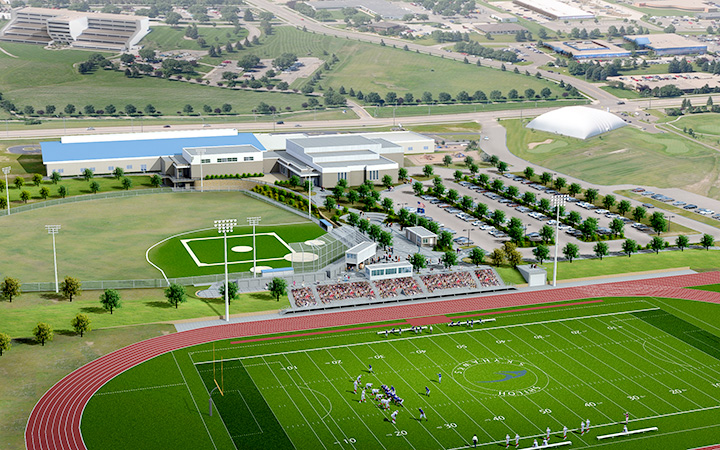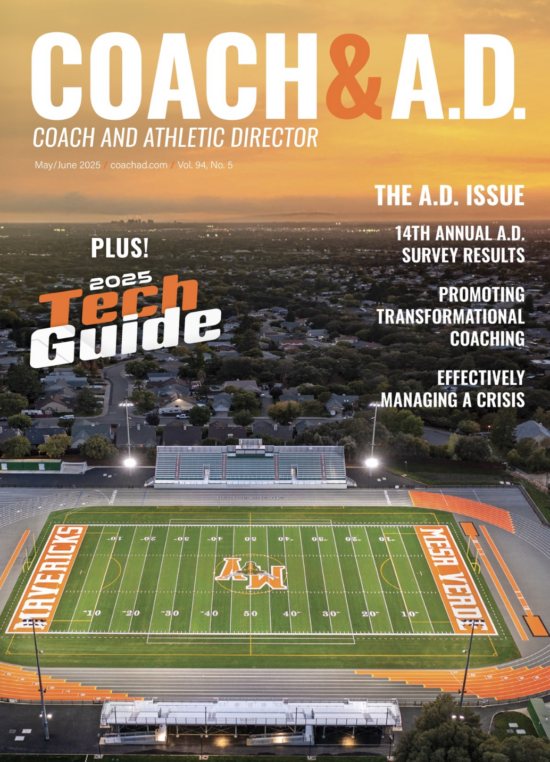Extending the life of your track & field surface
We already know that today’s high school track & field athletes are tomorrow’s college track & field athletes. But did you know that high schools (and colleges) make up the talent pipeline for Team USA as well? Unlike many sports (like soccer, basketball, and plenty of others), there are no travel programs for track & field. And that means Olympians exclusively come from school programs.
With that in mind, it’s important to keep track & field facilities in good repair, which means the team performs its best and helps avoid injuries among all athletes, whether or not they are in the Olympic developmental pipeline.
As it turns out, some of these maintenance measures are remarkably easy to take.
“Use a leaf blower to rid the track of any dirt and debris,” noted Lee Narozanick, CFB, CTB of American Athletic Track and Turf in Vincentown, New Jersey. “Keeping mowers completely away from the track edges is also incredibly important.”
Don’t assume wind or rain will rid the surface of dirt, sand, or other debris; if this material is left on the track, it will be ground in by runners; over time, this will break down the rubberized surface, causing wear and leading to a need for repairs and surface replacement much earlier than planned. (All things considered, cleaning the track with a blower regularly is a good tradeoff.)
“You can also use a pressure washer as required to remove soot, mold, and mildew,” said Paul Nagle of Astroturf Corp. in East Syracuse, New York. However, he cautions, “Make sure to consult with the track surface manufacturer as to the amount of water pressure to use.”
Some measures should be brought up to coaches, as well.
“Track and field practices exert the most wear and tear on a track surface due to the repetitive nature of training,” noted Nagle. “Rotating intense training areas can help avoid surface breakdown, especially at the blocked starts, jump takeoff areas, and runway approaches. Moving the starting blocks around to different locations will also prevent wear. You can also use the outer lanes to practice long/triple jump, pole vault, and javelin approaches.”
If benches, timing tables, or other equipment must be placed near the track, Narozanick advises keeping them far away from the surface so that they do not cause damage. Keeping such equipment on a grass infield is acceptable.
Both Nagle and Narozanick recommend the use of proper footwear; track surface manufacturers should be consulted for their recommendations on spike types and lengths. Posting signs stating these rules can also help. If the facility is used when coaches and athletic directors are not present, try to establish signage that asks users to use different lanes (1, 2, 3, etc.) each week for their workouts. Unfortunately, runners and walkers tend to gravitate toward the inner lanes, leading to wear in those areas first.
Additionally, professionals recommend putting locking covers on sand pits and over the water in steeplechase jumps to keep sand from being tossed around and to keep water from becoming an attractive nuisance to parents who leave their children unattended while they run or walk the track. (Another recommendation is posting rules noting that strollers, tricycles, bikes, and other conveyances are prohibited; obviously, sports-specific wheelchairs are an exception.)
Even out of season, when your infield is used for sports like soccer and football, it is possible to protect the track, said Nagle.

“Using mats to protect equipment crossing zones and high-use places such as bench areas for field sports and cheerleading helps prevent premature surface wear.”
If machinery must cross the track to mow or otherwise care for the field, put boards or metal ramps across the track surface. Mats should be put on top of, as well as underneath, these ramps to protect the track from damage.
Because many track & field seasons start in the early spring when snow is still on the ground, coaches will sometimes feel the weather is forcing their hand.
“If the facility is in an area that receives snow, it is important to let the snow melt naturally,” said Nagle. “The owner should never allow personnel on the track with plows, hand tools, shovels, power brooms, or snow blowers to remove snow.”
But when that snow does melt, added Nagle, the athletic director should inspect the track carefully and look for any damage that might have occurred in the previous season or over the winter.
Whether or not the track is still under warranty, he noted, “the owner should bring any concerns to the attention of the contractor. It may be a product issue or it may be a maintenance oversight. No matter what, it is important to have an open and honest relationship with the track surface installer. The track installer can assist with maintenance suggestions. The surface contractor can also tell if there are issues with the surface that may require more intense repairs. Quite often, they can assist with mitigating a serious failure.”
» ALSO SEE: What’s trending in athletic facilities
While surface repair kits are available, it is always best to ask the track contractor before attempting any DIY work. And, Narozanick said, some signs can indicate a serious underlying problem, “like surface bubbling, delamination or peeling, as well as areas of intense wear or places where the track is cracked.”
Something important to remember, said Nagle, is that each track is unique. The success of the facility depends upon having a good relationship and open communication with the contractor.
“Your track is different from your neighboring community’s track. For the track surface facility to reach its useful life cycle, the facility owner and the track installation contractor must form a trusting partnership.”





